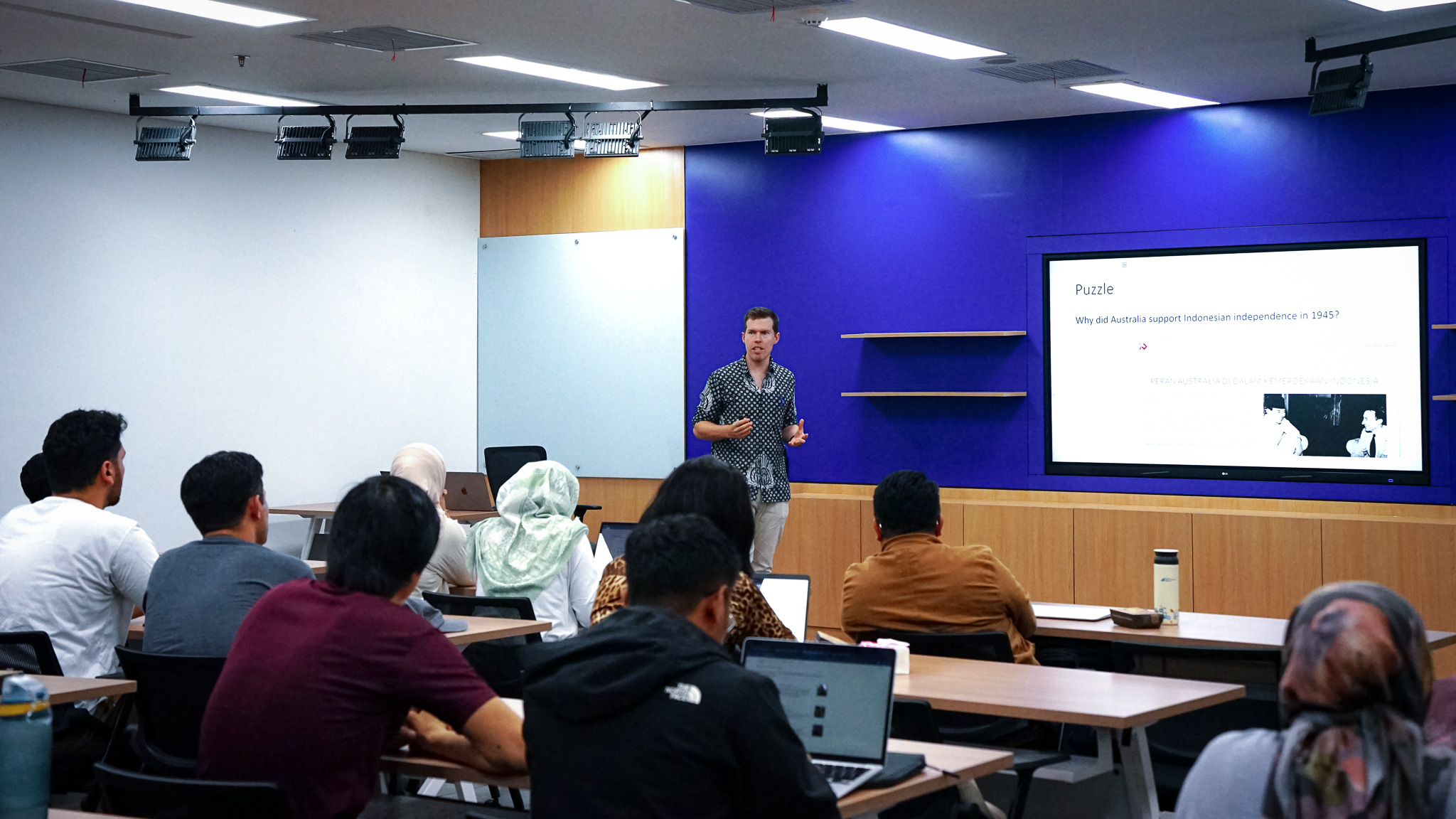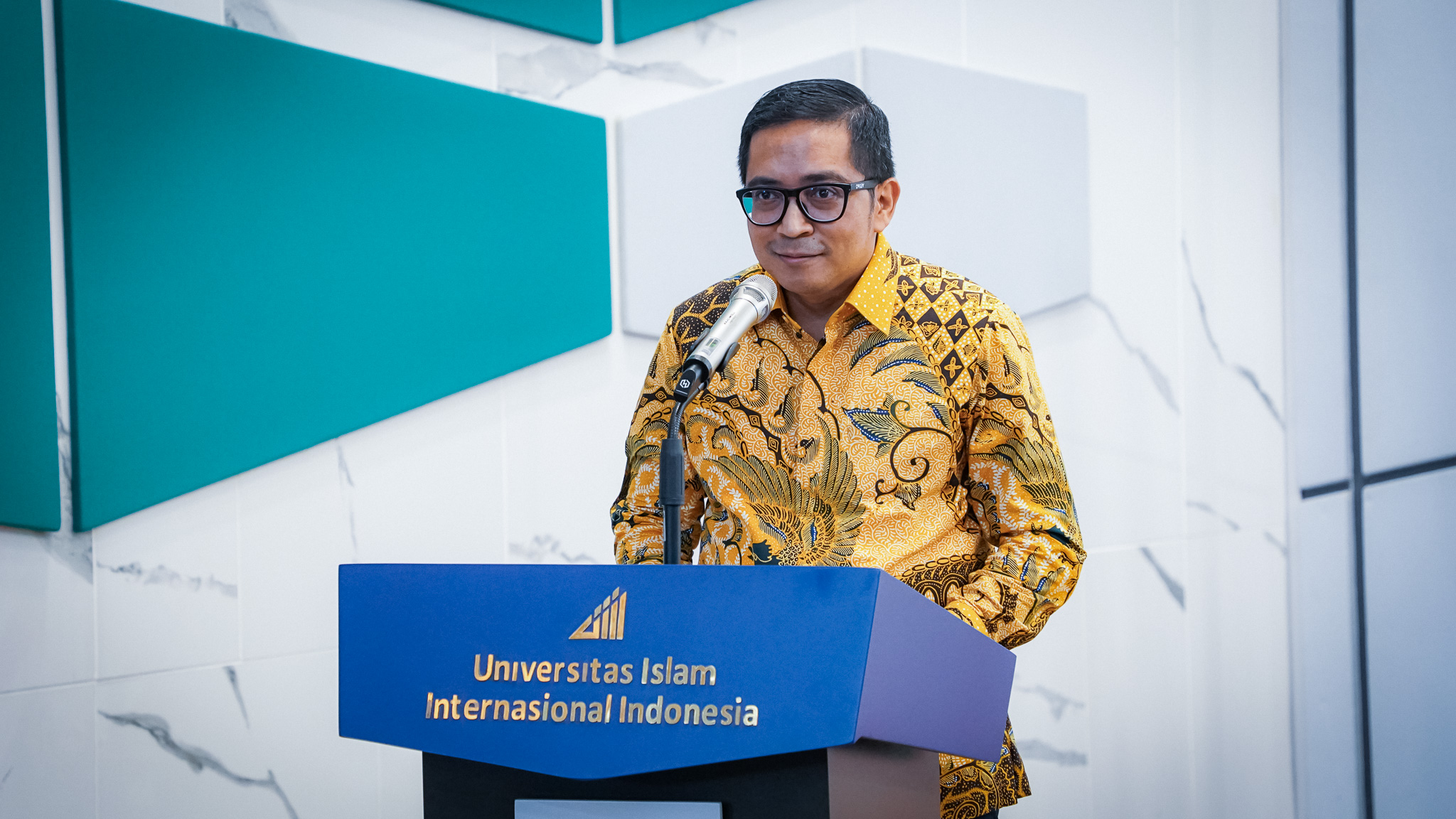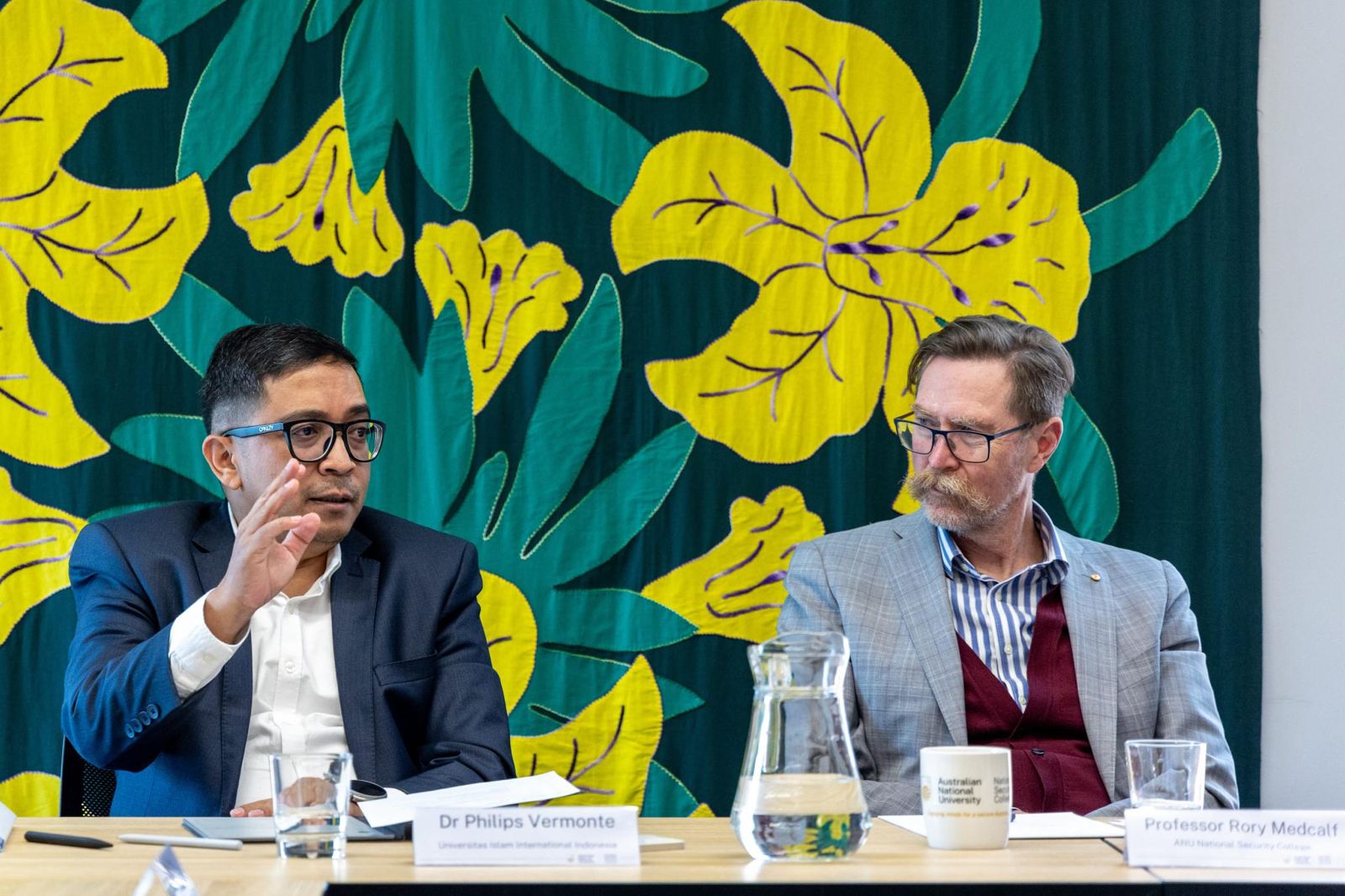The Burtonian: The Forgotten Australia Asia-centric Foreign Policy
April 30, 2024Contributor: Nadya Nabillah Istiqomah Jayadi

UIII, DEPOK – The Faculty of Social Sciences, Universitas Islam International Indonesia (UIII) hosted the 47th Brownbag event on April 24th, 2024. The event features guest speaker Quinton Temby, Ph.D., an Assistant Professor at Monash University, Indonesia. He presents his views on Australia's foreign policy in a discussion-themed Non-Alignment, Western Interest, and Australia's Foreign Policy in Indonesia. Temby's main discussion revolves around Australia's foreign policy trajectory dynamics. He examines how Australia's foreign policy was shaped through a historical approach.
Essentially, Australia is part of the Commonwealth. The UK has also been a security patron for Australia since its independence in 1901. Hence, Australia's foreign policy was closely linked to the UK's interests. However, in the 1940s, there was a shift in the focus of Australia's foreign policy from Europe to Asia. Temby argues that this period was the momentum of Australia's non-aligned foreign policy, largely due to the role played by John Burton.
The Non-Alignment: Burtonian Foreign Policy
John Burton had a significant role in Australian foreign affairs since 1941, when he served as Secretary of the Department of External Affairs. Burton contributed to shaping a progressive and Asia-centric Australian foreign policy. By supporting the non-alignment movement of Indonesia and other Asia-Africa countries, Burton brought Australia's foreign policy to begin engagement with Asia for the first time.
The shift in Australia's foreign policy outlook was also influenced by the formal break of Australia with the UK in 1942, leading Australia to become more independent temporarily. The 1940s and early 1950s were crucial times for Australia's support of Asian nationalist movements.
The notable contributions of Burtonian foreign policy are evident in several of Australia's foreign policy maneuvers. Australia actively supported Indonesia's independence, as demonstrated by its actions in 1947. During that year, Australia referred the Dutch military aggression in Indonesia to the United Nations Security Council (UNSC), citing a violation of peace under Article 39, Chapter VIII of the UN Charter. This allowed the UN to take military measures to constrain the Dutch.
Burton and Asia Africa Conference
In 1947, Australia acted as the representative of the Indonesian government at the UN. Australia opposed pressure from the UK and the US for Indonesia to concede to the Dutch demands. Burton emphasized that Indonesia's instability would threaten Australia's future relations with Indonesia and Southeast Asian countries. Additionally, Burton criticized the UK and the US for not intervening to prevent the Dutch military aggression. Burton's stance was criticized by the US because Australia was prioritizing Asia over Europe.
Furthermore, the Burtonian foreign policy influence was also found in Australia's active support of Jawaharlal Nehru's anti-colonial movements. Some international events in Asia's decolonization efforts that Australia has attended include the 1947 Asian Relations Conference, which became the precursor of the Asia-Africa Conference; the 1949 Delhi Conference on Indonesia's independence; and the 1950 Baguio Conference to address communism threats in Southeast Asia. In addition, Australia's increasingly pro-Indonesia foreign policy has been emphasized since the 1949 Delhi Conference. Later, in 1950, Burton and Foreign Minister Percy Spender attended the Colombo Conference in Sri Lanka, which led to the establishment of the Colombo Plan in 1951. The Colombo Plan is an intergovernmental organization that further promotes economic and social development in the Asia Pacific region.
One significant aspect of Burton's viewpoint on the Colombo Plan was his recognition of the deepening interdependence between Australia and Southeast Asia. Amid Asian decolonization efforts and the growing threat of Communism, Burton suggested Australia should play a role in stabilizing Southeast Asia by fostering economic development in the region through expanding trade and providing economic and technical assistance. Southeast Asia was perceived as a buffer zone between Australia and mainland Asia. As a result, Australia supported the Colombo Plan. It was also mentioned in the book Drawing the Global Color Line that the Colombo Plan acted as a catalyst for the decline of the White Australia Policy.
The Bound of Western Interest
Later, the emergence of the US as Australia's new security patron began in the early 1950s when the ANZUS security treaty was ratified in 1951. It drove Australia towards aligning its interests with the US and its allies. The period also marked the beginning period of the Cold War and Burton's resignation from his office. Amid the height of the anti-Communism campaign, when Australia had allied itself with the US, controversies surrounding Burton emerged. He was accused of being involved in the Communist agenda. Subsequently, the Australian government sought to erase the Burtonian foreign policy.
The shift in Australia's foreign policy led to a renewed patronage of great powers. There is a consensus that Australia's foreign policy was driven by a fear of abandonment. Consequently, Australia allied itself with Western powers such as the UK and later the US. However, Temby argues that Australia's foreign policy was driven by complacency of attachment, which resulted in great reliance on the US. The situation coincided with the emergence of the US as a unipolar power from 1990 to 2016.
Following the Rise of China in the 2000s and China's growing influence in international trade and geopolitical contestation in the South China Sea since 2016, the global power dynamic has shifted away from US unipolarity. China has emerged as a strong competitor to the US. Australia, as a US alliance, faces a dilemma because China is Australia's major economic partner, and Australia seeks to maintain good relations with Asia. Despite this, Australia has strengthened its security alliance with the US through participation in QUAD and AUKUS. These security alliances potentially strain Australia's relations with China. Temby suggests that Australia aims to leverage US technological advantages for national security, which implies the close alignment of Australia's foreign policy with the US interests.
Based on Temby’s thorough analysis, it is found that leadership dynamics within the Australian government, war-time contestations, decolonization efforts in Asia-Africa, and the transition of security patronage from the UK to the US have led to several shifts in Australia's foreign policy. Australia, which previously had an Asia-centric policy, aligns with the Western great powers under the US leadership. Although bound by the US interests, Australia still strives to maintain good relations with the Asian region, especially Southeast Asia as its close neighbor.
It is also worth noting that John Burton was among the prominent figures in Asia’s decolonization history. Burtonian foreign policy is the long-forgotten Australian Asia-centric outlook.
- Dr. Nia Deliana Navigates India-Indonesia Maritime Softpower at Odisha Research Workshop
- UIII Extends Application Deadline for 2025 International Admissions
- UIII Embraces a Green Ramadan: A Month of Worship and Sustainability
- UIII Evaluates Quality Assurance System, Plans For New Study Programs
- Lost at Sea: UIII’s Dr. Nia Deliana Reveals the Silent Crisis of Sea Refugees
- The Qur’an in a Changing World: Prof. Sahiron Syamsuddin’s Visionary Lecture at UIII
- A Shared Mission of UIII and ICRC in Advocating International Humanitarian Law
- Hartford International University for Religion and Peace Signs MOU with UIII for Future Academic Partnership
- Professor Dian Masyita Honored as a Changemaker in Empowering Communities
- Bridging the Archipelago and the Nile


